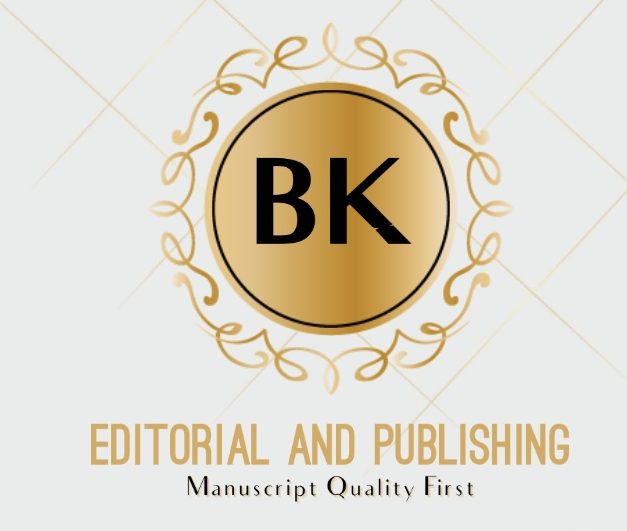BK Editorial provides copy editing services for a variety of documents to improve grammar, punctuation, readability, clarity, consistency, and flow in line with copyediting standards defined by Editors Canada. They are highlighted below:
Standards for Copy Editing
Copy editing is editing to ensure correctness, consistency, accuracy, and completeness.
CORRECTNESS
1. Address the rules of grammar in written English and correct errors (e.g., lack
of subject-verb agreement, misplaced modifiers, incorrect pronoun case).
2. Address the principles of punctuation and correct errors (e.g., comma splices,
misplaced colons, incorrect apostrophes).
3. Correct errors in spelling (e.g., typographical errors, errors arising from
homonyms and similar-sounding words).
4. Correct errors in usage (e.g., words commonly confused, such as imply/infer;
incorrect idioms and phrases, such as centres around).
CONSISTENCY
1. Identify and consistently apply categories of editorial style (e.g., abbreviations,
measurements, treatment of numbers, Canadian/British/American spelling).
2. Understand the different editorial styles for citing sources (e.g., APA, Chicago)
and consistently apply a style appropriate to the material.
3. Identify and either correct or query inconsistencies in logic, factual details, and
cross-references.
4. Ensure that all tables, photos, multimedia, and other visual elements are consistent
with surrounding text and are consistently presented (e.g., headings, captions,
numbering).
5. Understand the issues related to using other languages, especially French, in an
English context (e.g., capitalization, italicization, accented characters) and edit for
consistency.
ACCURACY AND COMPLETENESS
1. Identify and either correct or query items that should be checked for accuracy
(e.g., names of people and places, titles, quotations, web links).
Professional Editorial Standards 11 Revised 2009
2. Identify and either correct or query errors in material containing statistics,
mathematics, and numerals (e.g., incorrect imperial/metric conversions, incorrect
totals in tables).
3. Ensure that material is complete and, as appropriate, query or supply missing
elements (e.g., captions and headings, web links, phone numbers, addresses).
4. Recognize and flag places where citations are needed (e.g., quotations without a
source, unsupported generalizations in academic work, tables that require a data
source).
5. Recognize elements that require copyright acknowledgement and permission to
reproduce (e.g., quotations, multimedia, photos). If necessary, prepare
acknowledgements and obtain permissions or bring the matter to the attention of
the appropriate person.
Standards for Stylistic Editing (also called Deep Copyediting)
Stylistic editing is editing to clarify meaning, improve flow, and smooth language. This editorial stage often applies to documents that need extensive editing.
CLARITY
1. Improve sentence construction to more effectively convey meaning (e.g., by using
subordinate structures for subordinate ideas, choosing active voice over passive in
most contexts, replacing negative constructions with affirmative ones, making
unparallel constructions parallel).
2. Improve word choice to more effectively convey meaning (e.g., by replacing the
general and abstract with the specific and concrete, replacing noun strings,
eliminating clichés and euphemisms).
3. Where necessary, rewrite sentences, paragraphs, and passages to resolve
ambiguities, ensure logical connections, and clarify the author’s meaning or
intention, in harmony with the style of the material.
4. In improving a sentence, paragraph, or passage or making it intelligible, change as
little as possible and attempt to preserve the author’s voice where appropriate.
5. Ensure that all tables, photos, multimedia, and other visual elements are clear and
effectively convey the intended meaning.
FLOW
1. Ensure that transitions between sentences and between paragraphs are smooth and
support the coherent development of the text as a whole.
2. Where necessary, reorder sentences within a paragraph to ensure that the
paragraph has a clear and coherent focus.
3. Adjust the length and structure of paragraphs to ensure variety or consistency, as
appropriate to the audience and medium.
4. Adjust the length and structure of sentences to ensure variety or consistency, as
appropriate to the audience and medium.
LANGUAGE
1. Determine the language and reading level appropriate for the intended audience
and medium, and edit to establish or maintain that language and level (e.g., by
translating jargon into understandable terms, using vocabulary that is suitable to
the material, dividing long or complicated sentences into simpler ones).
2. Establish or maintain a consistent tone, style, and authorial voice or level of
formality appropriate for the intended audience and medium.
3. Eliminate wordiness (e.g., by deleting redundancies, empty phrases, unnecessary
modifiers).
We also provide formatting of documents and references. When requesting services, please the sample of your writing to help you choose the appropriate service commensurate with the complexity of your writing. Also include your target journal guidelines or a working URL to the journal site.

Leave a comment